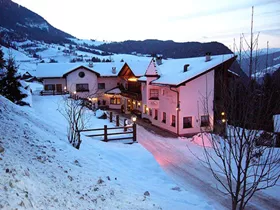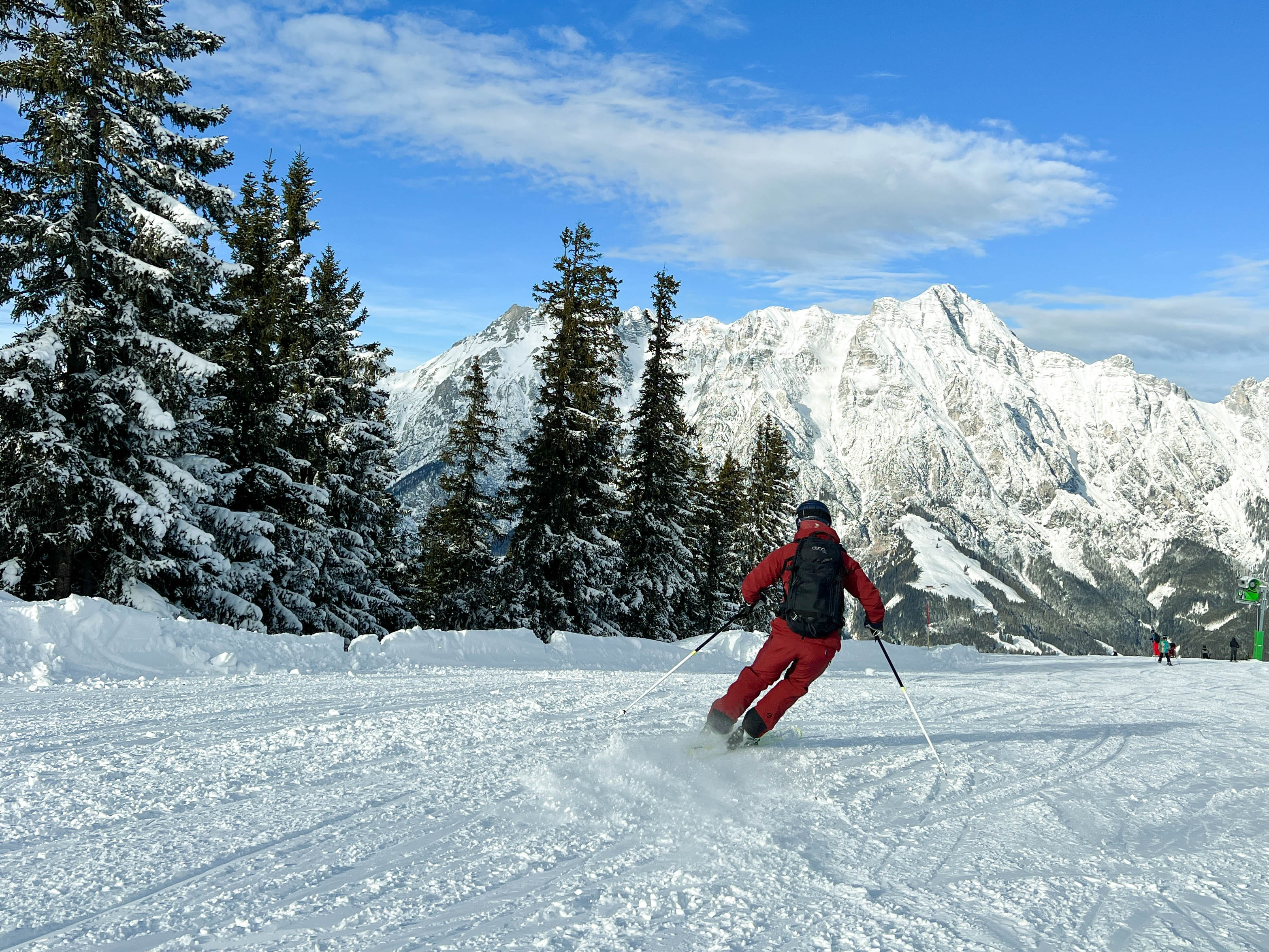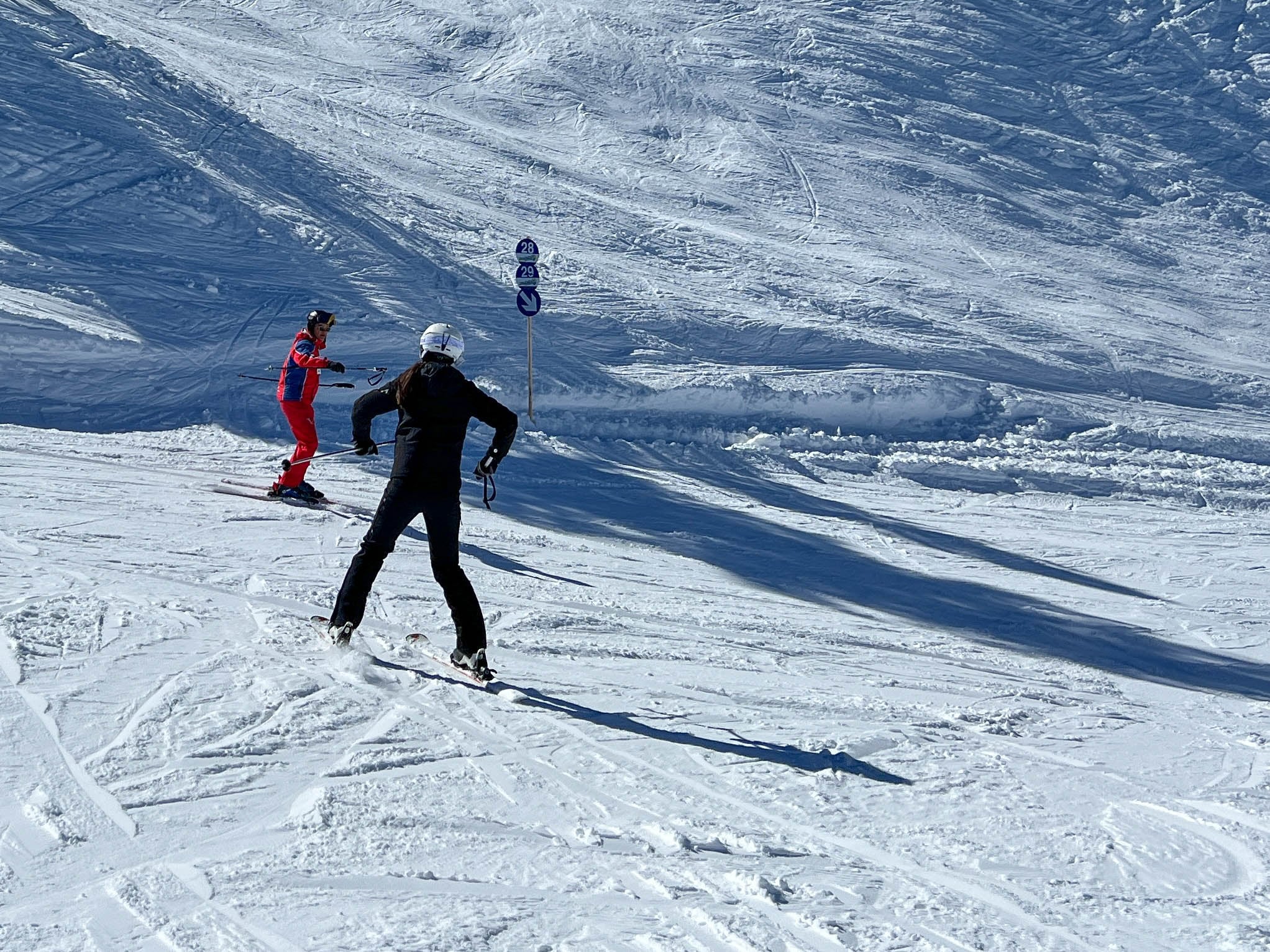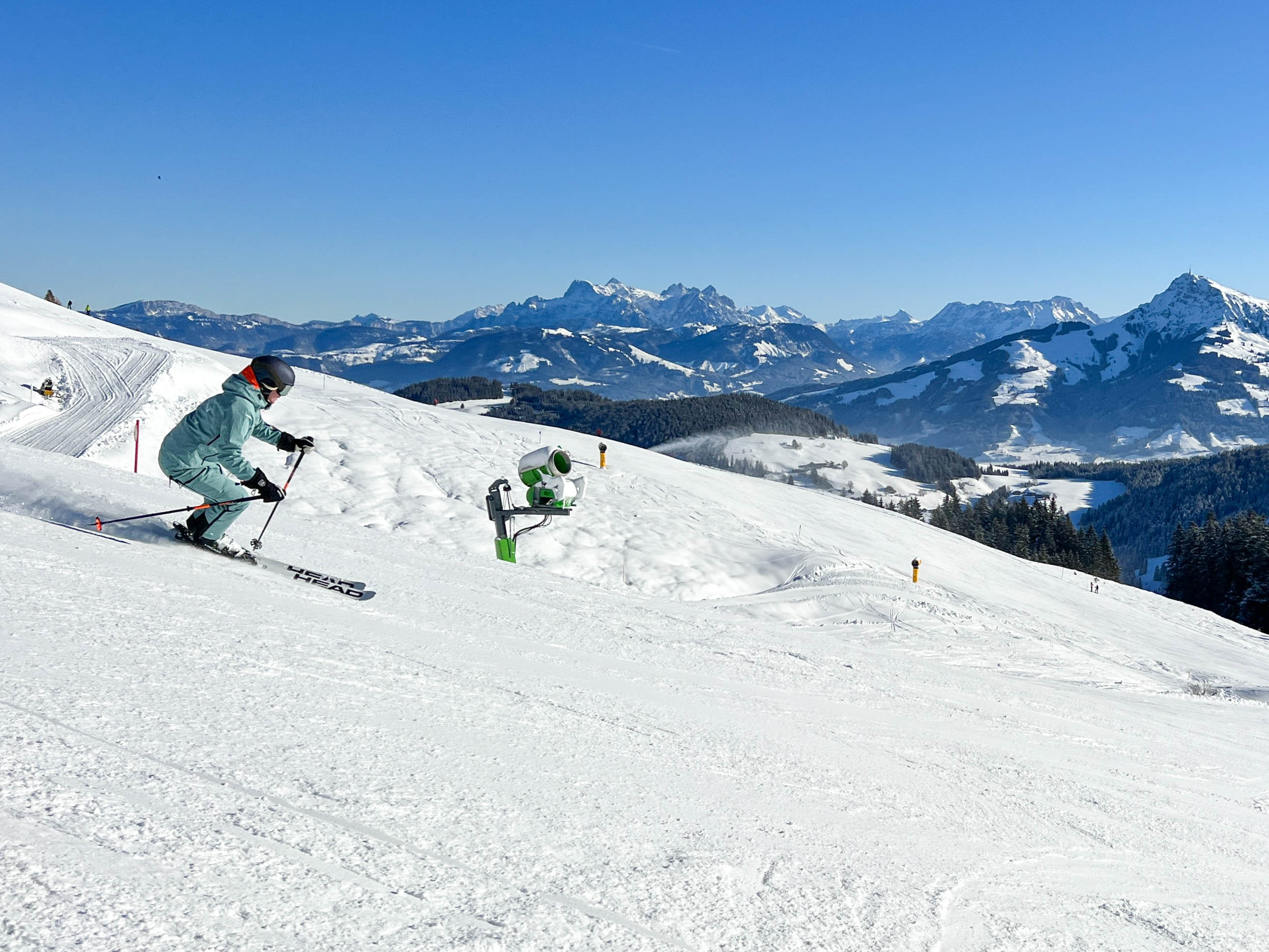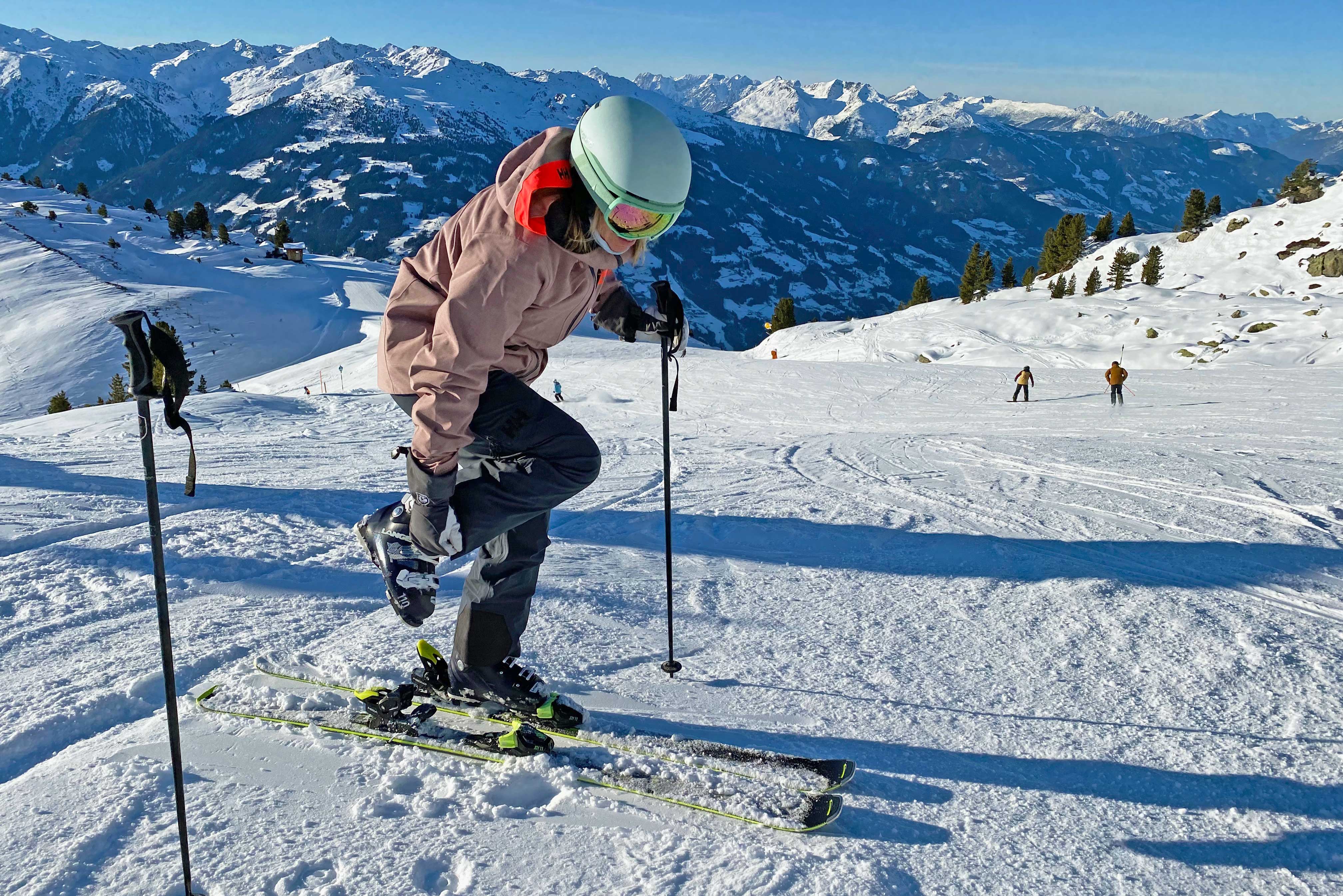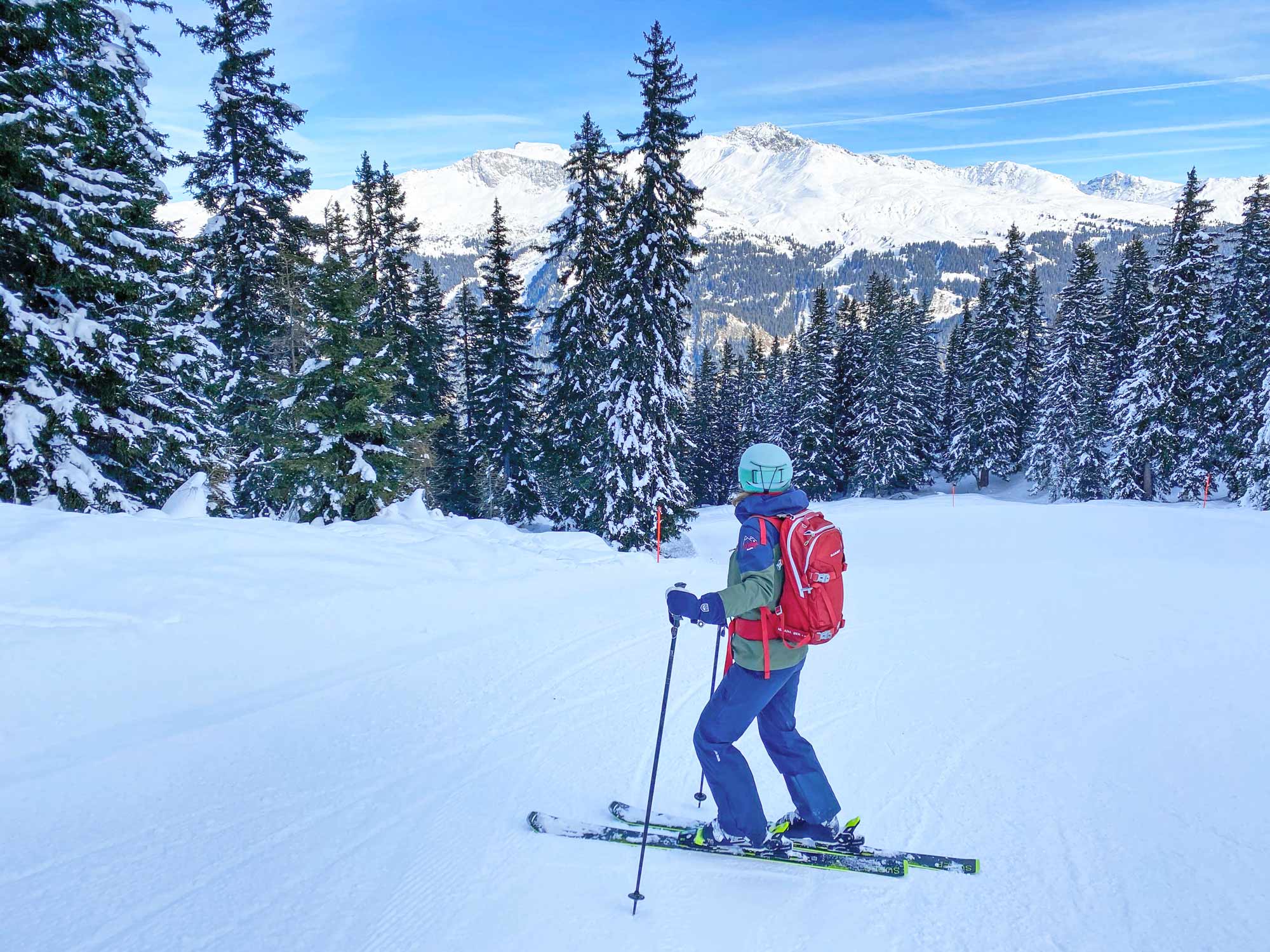
If you’re like me, you’ll recognise the disappoint in having imagined yourself a skiing pro, whizzing down the slopes with perfect technique, only to look at a video replay and find out your skiing technique is not nearly what you thought it was. While ski lessons are all very well, sometimes it’s nice to have automatic, on-the-go feedback so you can work on improving your skiing technique every time you go skiing. Carv is the new technology that you can wear right in your ski boots. It helps pinpoint where you’re going wrong, and the AI-infused smartphone app tells you how you can improve your skiing technique.
Carv
is a wearable device that you insert into your ski boot. The device, which has integrated artificial intelligence, measures your turns based on balance, edging, rotary and pressure based on data from 96 pressure sensors. Carv sends this data to your phone, which transmits the information to you via headphones so you can understand how to improve your skiing technique. With Carv, you can set goals for yourself and earn points by completing tasks. With an internet connection, Carv lets you sync your data with the cloud, allowing you to compare your progress with your friends. Carv is currently available for iOS and will be released for Android in late 2019. Two inserts and two trackers cost £229.
Wearable pressure sensors provide feedback about your skiing technique
The Carv insoles are less than 1mm thick and fit snugly into your ski boot. Each sole has 48 pressure sensors that measure the balance, edging, rotary and pressure of each foot. A tracker evaluates the measurements and transmits the data via bluetooth to your smartphone, where the app will tell you the the results and give you suggestions for improving your skiing technique. The app also keeps track of metrics like your total distance travelled, average speed and number of runs that day.
Carv helps every level of skier
Everybody from beginners to advanced skiers can benefit from Carv. Work on your posture by measuring the pressure you put on your edges while carving, or improve your performance in downhill racing through a comprehensive analysis of your technique. Even in the snow park, Carv can measure the time you spend in the air as well as the takeoff and landing pressure. Cross-country skiers can also use the technology.
© Carv
Mastering the perfect carving technique for skiing
Carving refers to the practise of turning on your edges while skiing in a way that you don't skid down the slope but rather cut neatly through the snow. When you look back at the tracks made by a good carver, you'll see a thin line weaving down the piste. It's all about weighting and unweighting properly and learning to lean into your edges. But it's easier said than done, and the Carv app can come in handy if you're struggling to find out where you're going wrong: whether you're holding your poles too far back or twisting your core too much, whether you're placing too much weight on your inner ski or sticking your hips out in too exaggerated a fashion. Check out more common skiing mistakes >
Ready to move to the next level? Check out:
Ski areas with lots of
blue pistes >
Ski areas with lots of
red pistes >
Ski areas with lots of
black pistes >
If you’re like me, you’ll recognise the disappoint in having imagined yourself a skiing pro, whizzing down the slopes with perfect technique, only to look at a video replay and find out your skiing technique is not nearly what you thought it was. While ski lessons are all very well, sometimes it’s nice to have automatic, on-the-go feedback so you can work on improving your skiing technique every time you go skiing. Carv is the new technology that you can wear right in your ski boots. It helps pinpoint where you’re going wrong, and the AI-infused smartphone app tells you how you can improve your skiing technique.
Carv
is a wearable device that you insert into your ski boot. The device, which has integrated artificial intelligence, measures your turns based on balance, edging, rotary and pressure based on data from 96 pressure sensors. Carv sends this data to your phone, which transmits the information to you via headphones so you can understand how to improve your skiing technique. With Carv, you can set goals for yourself and earn points by completing tasks. With an internet connection, Carv lets you sync your data with the cloud, allowing you to compare your progress with your friends. Carv is currently available for iOS and will be released for Android in late 2019. Two inserts and two trackers cost £229.
Wearable pressure sensors provide feedback about your skiing technique
The Carv insoles are less than 1mm thick and fit snugly into your ski boot. Each sole has 48 pressure sensors that measure the balance, edging, rotary and pressure of each foot. A tracker evaluates the measurements and transmits the data via bluetooth to your smartphone, where the app will tell you the the results and give you suggestions for improving your skiing technique. The app also keeps track of metrics like your total distance travelled, average speed and number of runs that day.
Carv helps every level of skier
Everybody from beginners to advanced skiers can benefit from Carv. Work on your posture by measuring the pressure you put on your edges while carving, or improve your performance in downhill racing through a comprehensive analysis of your technique. Even in the snow park, Carv can measure the time you spend in the air as well as the takeoff and landing pressure. Cross-country skiers can also use the technology.
© Carv
Mastering the perfect carving technique for skiing
Carving refers to the practise of turning on your edges while skiing in a way that you don't skid down the slope but rather cut neatly through the snow. When you look back at the tracks made by a good carver, you'll see a thin line weaving down the piste. It's all about weighting and unweighting properly and learning to lean into your edges. But it's easier said than done, and the Carv app can come in handy if you're struggling to find out where you're going wrong: whether you're holding your poles too far back or twisting your core too much, whether you're placing too much weight on your inner ski or sticking your hips out in too exaggerated a fashion. Check out more common skiing mistakes >
Ready to move to the next level? Check out:
Ski areas with lots of
blue pistes >
Ski areas with lots of
red pistes >
Ski areas with lots of
black pistes >




